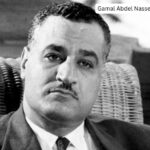Hosni Mubarak stands as one of the most prominent and controversial figures in Egypt’s modern history. Serving as the country’s president for nearly three decades, from 1981 to 2011, Mubarak became the longest-serving leader in Egypt’s history. His rule witnessed periods of stability, economic reforms, authoritarian control, and eventually, widespread protests that led to his dramatic downfall.
Early Life and Military Career
Born on May 4, 1928, in Kafr El Meselha, Egypt, Hosni Mubarak pursued a career in the military, enrolling in the Egyptian Military Academy and later the Air Force Academy. His distinguished service as a pilot and officer quickly elevated him through the ranks. By 1972, he was appointed as the commander of the Egyptian Air Force, playing a key role during the 1973 Yom Kippur War against Israel. His leadership in the air campaign earned him national recognition and respect within the military establishment.
Rise to the Presidency
Mubarak entered politics when he was chosen as Vice President by Anwar Sadat in 1975. On October 6, 1981, following Sadat’s assassination during a military parade, Mubarak assumed the presidency. Initially, many Egyptians viewed him as a stabilizing figure, particularly after the turbulence of Sadat’s era.
Domestic Policies and Governance
Mubarak’s leadership emphasized political stability and security. However, his governance was characterized by limited political freedoms, state control, and the heavy involvement of security agencies. While parliamentary elections were held, they were often criticized for lack of fairness and restrictions on opposition parties.
Economically, Mubarak initiated liberalization policies in the 1990s, encouraging foreign investment and privatization. These reforms contributed to periods of growth, but wealth distribution remained uneven, and poverty continued to challenge millions of Egyptians. Corruption and nepotism within government structures became recurring criticisms of his administration.
Foreign Policy and Regional Role
On the international stage, Mubarak maintained Egypt’s strategic alliance with the United States while also preserving the peace treaty with Israel signed under Anwar Sadat. He positioned Egypt as a mediator in Middle Eastern affairs, particularly in Israeli-Palestinian peace negotiations. His government balanced Western ties with strong influence in the Arab League, which kept Egypt at the center of regional diplomacy.
The Road to the Arab Spring
Despite his long tenure, discontent brewed steadily among Egyptians. High unemployment, rising food prices, restricted freedoms, and widespread corruption fueled opposition. The turning point came in January 2011, when mass protests erupted in Cairo’s Tahrir Square and across the nation as part of the Arab Spring movement. After 18 days of protests and mounting international pressure, Mubarak resigned on February 11, 2011, ending nearly 30 years of rule.
Trial and Later Years
Following his ouster, Mubarak faced trials on charges including corruption and the killing of protesters. Although some convictions were overturned, his health deteriorated over the years, leading to his eventual release from detention in 2017. He lived a relatively quiet life until his death on February 25, 2020, at the age of 91.
Legacy of Hosni Mubarak
Hosni Mubarak’s legacy remains deeply complex. Supporters credit him with preserving Egypt’s stability, modernizing parts of its economy, and maintaining a pivotal role in regional politics. Critics, however, remember his authoritarianism, human rights abuses, and the deep-rooted corruption that flourished under his rule.
As Egypt’s longest-serving president, Mubarak left an indelible mark on the nation’s political landscape. His era symbolizes both the resilience and fragility of authoritarian leadership in the face of popular demand for freedom and change.





